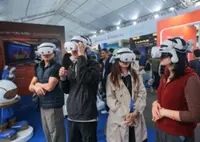The world’s biggest retailer is testing digital labels that light up when activated with an app. The devices are already used by employees at a few dozen stores, where they flash green to help shelf stockers and blue to assist product pickers fulfilling online orders. — AFP
It’s a common headache: Shoppers comb through the cavernous aisles of a massive Walmart store, unable to find what they’re looking for. Soon, some will be able to follow a blinking light to the right shelf.
The world’s biggest retailer is testing digital labels that light up when activated with an app. The devices are already used by employees at a few dozen stores, where they flash green to help shelf stockers and blue to assist product pickers fulfilling online orders.





